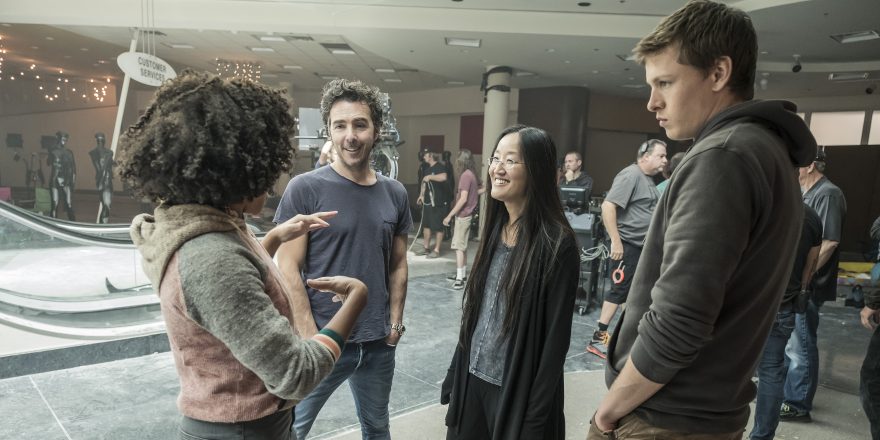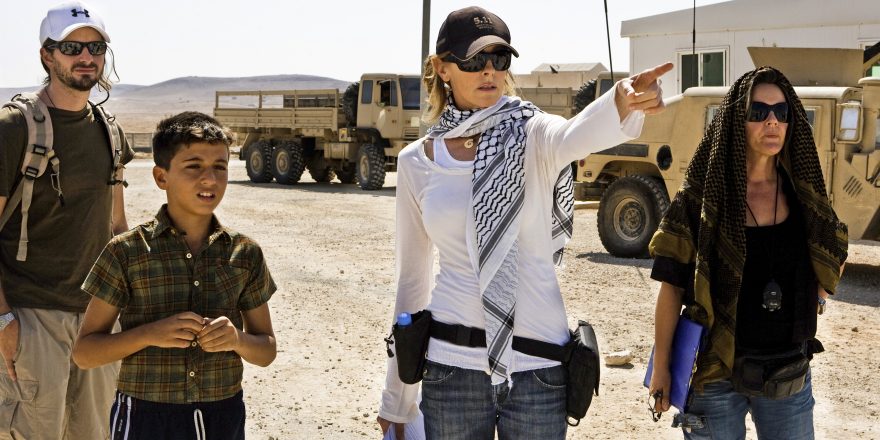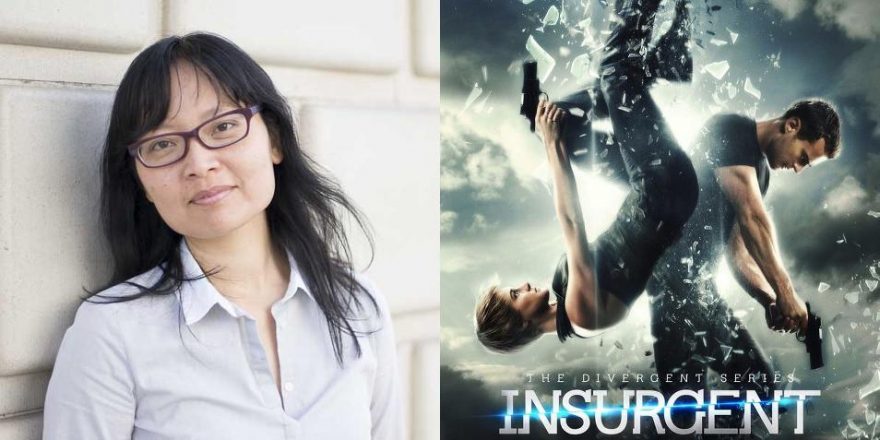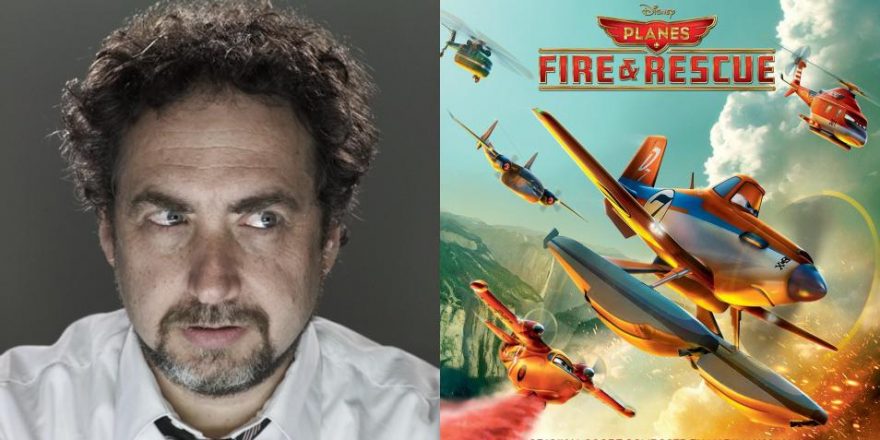It was summer in Atlanta and I was at The Optimist, a bustling upscale restaurant popular for industry folks. Octopus salad being served, clinking glasses of wine, roaring laughter from the next table, and a constant flow of wait staff made the place a wall of sound. Across from me sat my producer Dan Levine and my unit production manager John Starke having a great time yelling a conversation over the noise. I said something and they both leaned forward to hear me since they missed it in a clatter of canapes. I repeated myself louder, and they leaned even closer now looking worried. I took a deep breath, and yelled as loudly as I could – which is sadly about the level of room tone – and they finally nodded and continued on.
We were there trying to staff The Darkest Minds, my first live-action movie. I’d spent a long time in animation, gathering connections and friends enough to staff any animated film, but I had no connections with live-action crews. This crew would therefore have to be started from scratch, crafted to form a humming machine that fit this director. And this director didn’t talk.
I’m an introvert. Even worse, I’m a quiet introvert. When I was little, my mom said I used to talk and sing constantly. If I was ever quiet, she knew right away that I was sick or in a whole lot of trouble. But somewhere around coming to the U.S. not knowing a word of English, I went from being a chatty child to a quiet one. I talked funny, I dressed funny, I looked funny. So it became easier to talk less and observe more. I watched, I absorbed, I analyzed, and I made up movies in my head. And this kind of introversion is fine for an artist. Artists are expected to express themselves through their art, revealing their latest enigmatic painting with a flourish of silken tarp, daring people to stare and figure it out. But I liked movies. And I sucked at painting.
All my art was in service to exporting the movies in my head. I didn’t care about technique or line quality or how rich the brushstrokes were. It was all imperfect to me because it wasn’t the movie in my head. It didn’t move, it didn’t have sound. So I started to trace the movie I saw as quickly as I could. Later I learned this was called storyboarding. I became a very useful storyboard artist, making the movies in my head for many years and many productions. I was happy. And then I got promoted.
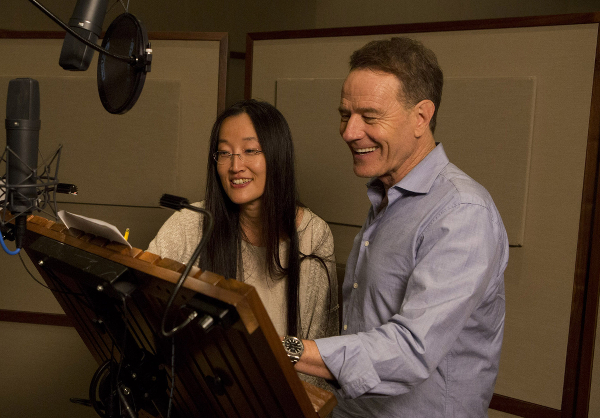
When the producer of Sinbad, an animated film at Dreamworks, told the studio that she wanted me as head of story, I was told the conversation went like this. “What? Really? But she never says anything.” That was accurate. I would usually sit in meetings watching people yelling and arguing and tearing their hair out over a problem since many people think out loud. I would quietly do what I always did; I watched, absorbed, analyzed, and made the movie they were trying to make in my head. Then I would raise my index finger to get their attention and offer a solution. Communicating through hand signals was my way of being heard in a loud room. My saving grace was that what I communicated was useful and valuable enough that people would get quiet and listen.
This went on through my time as head of story on Kung Fu Panda, and then as director on the second and third films in the franchise. I was never the kind of director that dominated the conversation. I would tap the conversation to nudge it to where I wanted it to go, or I’d step in if I saw a solution. For me, it was never about who talked most, but about whether the problem was solved. This was workable in an air-conditioned office in an animation studio. The groups involved were smaller, and made up of often introverted artists. In meetings, people could just scoot their chairs closer if they couldn’t hear me, and the acoustics were fantastic. But now I was about to go direct a live-action production; out in the field, drowned out by wind machines and trucks, with an army of 300 people waiting for me to yell, “Action!”
Every behind-the-scenes peek of movies I’d seen had dramatic images of the director yelling, “Action!” They had great voices. They often had great beards to make that stentorian “Action!” even more impressive. I remember once in grade school, we kids were arrayed in the playground to represent the orbits of the planets. We each had to yell out our respective planet so the rest of the class could hear us. Mine was Neptune. It didn’t go well.
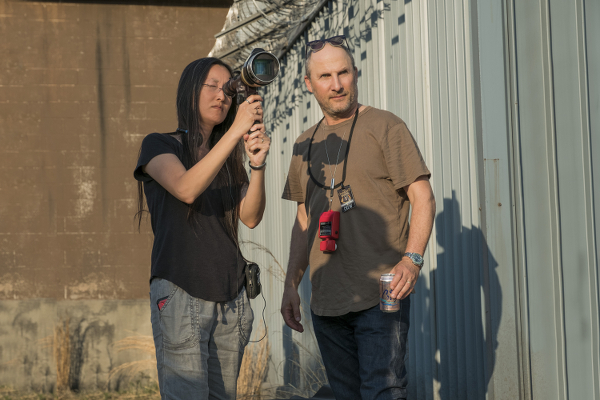
A lot of people had advice about being on set. You need to show immediately you’re in charge, they said. The crew will feed off your hard-charging enthusiasm. You have to be the dynamo driving everyone through the long hours. Play live music to pump up the energy. Go to a lot of raucous dinners with the cast so they like you. These are things that definitely work, but they only work for extroverts. For me, if one made a bespoke horror movie to haunt my nightmares, that’s what it would look like.
So understandably the producers were concerned. Their director was a mumbling introvert, and they had a movie to shoot. They had set a meeting with someone they wanted me to consider as my 1st A.D., so we were at The Optimist, among the noise and clatter, waiting for him to arrive. H.H. Cooper was someone John Starke had worked with before, so a known quantity. “I think you’ll like him,” John had said mysteriously.
When H – everyone calls him H although no one knows what the H stands for – arrived, he didn’t say anything. He just moseyed up, smiled, and waited for the sentence being spoken to end. I liked him instantly.
H was quiet, watchful, and seemed to analyze everything being said. I could see the gears working. He spoke my language. But then, he could also yell across the table to loudly answer a question. Holy mackerel, he was like an introvert superhero.
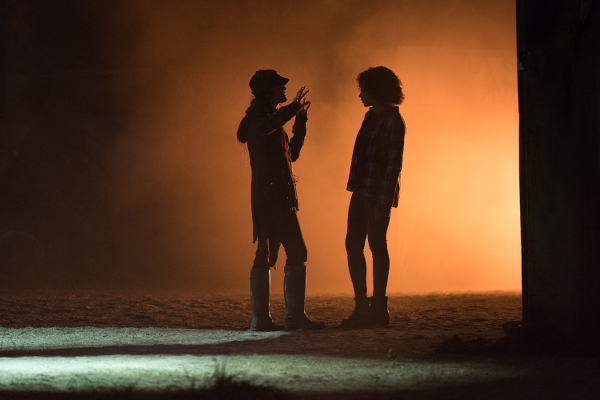
H told me that every director did things differently and that I would find my own way. I asked him if he had any advice. He said he did, and it wasn’t anything to do with being anyone’s dynamo or partying with the cast. He told me to start working out. Because I’d be standing a lot.
The producers later said that they knew it was going well because they saw me and H having a rapid-fire whisper conversation on the other side of the table. It was probably the most they’d ever seen me talk. And they had no idea what we were talking about because they couldn’t hear a word. They were utterly left out.
H and I got a system going on set. He’d watch for my hand signal, a subtle flick of my index finger. And then with a stentorian yell he’d say, “Action!” Another signal, he yelled, “Reset! Go again right NOW!” Another, “Keep the camera rolling!” Another, “CUUUUT!!!” Between setups, I spoke with the actors calmly and quietly, creating a bubble of peace so they could think. As the trucks roared by, as the flamethrowers washed us with heat, I’d help a little girl get to tears that were real. I felt safe. I felt heard, even though I’d never once had to raise my voice.
Behind-the-scenes images from The Darkest Minds by Daniel McFadden, courtesy of 20th Century Fox.


